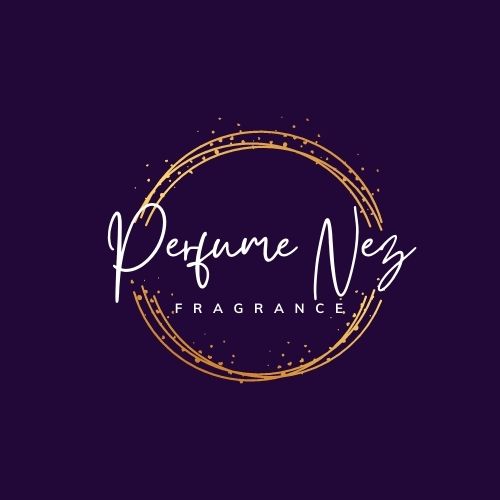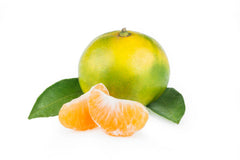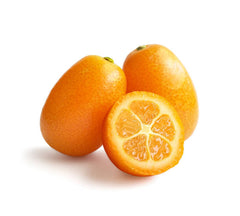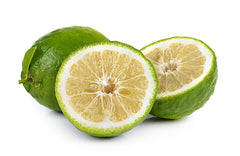What Does Lily of the Valley Smell Like?
Click For Affordable Inspired Perfume Alternatives

Embark on a fragrant journey to the serene woodlands and discover the enchanting aroma of Lily of the Valley. A delicate and graceful flower native to Europe, Lily of the Valley, scientifically known as Convallaria majalis, boasts a fragrance that captures the essence of springtime gardens. Join us as we explore the question: What does Lily of the Valley smell like?
What Does Lily of the Valley Smell Like?
The fragrance of Lily of the Valley is a captivating blend of sweet, floral, and green notes. Imagine the soft and ethereal scent of blooming flowers, reminiscent of a woodland glade in the midst of spring. Lily of the Valley's aroma is a celebration of floral elegance, offering a fresh and uplifting olfactory experience.
Lily of the Valley's Floral Elegance
Enter the enchanting world of Lily of the Valley, where the fragrance is a delicate and timeless celebration of florals. Join me on a fragrant journey to discover the captivating aroma that defines the essence of Lily of the Valley.
Sweet Serenity: A Floral Symphony
As you approach Lily of the Valley, the first olfactory impression is a gentle wave of sweet serenity, akin to a floral symphony in full bloom. Picture the sweetness of jasmine and the freshness of dew-kissed petals seamlessly combined. Lily of the Valley's fragrance is a celebration of floral brilliance, instantly transporting you to a serene garden with its delicate and uplifting character.
Delicate Freshness: A Green Bouquet
The scent of Lily of the Valley is a delicate dance of freshness. It captures the airy and green essence of spring, akin to a gentle breeze rustling through a forest of blooming flowers. The aroma is a testament to the delicate freshness of Lily of the Valley, creating a rejuvenating and serene olfactory experience that echoes the tranquility of woodland landscapes.
Powdery Softness: Floral Whispers
While predominantly sweet and fresh, there's a subtle powdery softness in Lily of the Valley's scent. This delicate floral whisper adds a touch of sophistication to the fragrance, creating a well-balanced composition that is both gentle and enduring. Lily of the Valley's aroma is a delightful interplay of sweetness and powdery softness, reminiscent of a spring bouquet in perfect harmony.
Sublime Purity: Essence of Blooming Petals
Delve deeper into the scent, and you may notice a sublime purity that characterizes Lily of the Valley's fragrance. It's as if the aroma carries the essence of freshly bloomed petals, creating a serene and uplifting olfactory experience.
Lily of the Valley's Floral Sonata
Hence, Lily of the Valley's fragrance is a floral sonata of sweetness, delicacy, powdery softness, and sublime purity. It stands as a testament to the timeless and elegant qualities of this delicate flower, offering a sensory experience that is both uplifting and comforting. Lily of the Valley, with its gentle and complex aroma, invites us to savor the floral notes found within its blossoms, a fragrant journey that unfolds with every graceful whiff.
Factors Influencing the Scent of Lily of the Valley Fragrance Oil
Lily of the Valley fragrance oil is a carefully crafted composition designed to capture the sweet and floral aroma of the Convallaria majalis flower. The formulation of this fragrance involves a thoughtful combination of aromatic compounds. Here are several factors that contribute to the elegant and delicate scent of Lily of the Valley fragrance oil:
-
Fragrance Composition: Lily of the Valley fragrance oil is a meticulously blended mixture of various aromatic compounds, chosen to replicate the characteristic scent of the flower. This composition may include both synthetic and natural ingredients to achieve the desired olfactory profile.
-
Floral Essence: At the heart of the fragrance lies the essence of Lily of the Valley. Notes of sweet florals, with a perfect balance of freshness and delicacy, are intricately blended to mirror the uplifting and timeless aroma of the flower.
-
Synthetic vs. Natural Components: Lily of the Valley fragrance oil often combines both synthetic and natural ingredients. Perfumers make choices to strike a balance between authenticity, cost considerations, and sustainability in the selection of these components.
-
Extraction Method: The method used to create Lily of the Valley fragrance oil, whether through distillation or extraction, plays a crucial role in defining the aromatic profile. Specific extraction methods contribute to the faithful recreation of the fresh and floral scent.
-
Additional Floral and Green Notes in the Blend: The fragrance may incorporate additional floral elements or subtle green notes to enhance complexity. These complementary notes contribute to the overall elegance of the scent, capturing the essence of Lily of the Valley.
-
Quality of Ingredients: The quality of raw materials, including the source of essential components, directly influences the freshness and authenticity of the Lily of the Valley scent in the fragrance oil.
-
Perfumer's Artistry: The expertise and creativity of the perfumer or fragrance creator are crucial. Perfumers leverage their skills to balance different components, creating a distinctive and delightful Lily of the Valley fragrance.
-
Regulatory Compliance: Adherence to regulatory standards and restrictions on certain fragrance ingredients is crucial. Compliance with safety guidelines requires careful consideration of ingredient choices to ensure the fragrance is safe for use.
-
Usage in Products: Lily of the Valley fragrance oil can be incorporated into various products, including perfumes, candles, room sprays, and bath products. The interaction with other ingredients in specific product formulations can influence how the Lily of the Valley scent is perceived.
-
Product Type and Concentration: The concentration of Lily of the Valley fragrance oil in a product affects the strength and longevity of the scent. Higher concentrations may be suitable for perfumes, while lower concentrations work well for candles, soaps, or room sprays.
-
Storage Conditions: Proper storage conditions for Lily of the Valley fragrance oil, both before and after formulation, are essential to maintain its stability and scent. Storing it in a cool, dark environment helps preserve the freshness of the fragrance.
-
Consumer Preferences and Trends: Formulations of Lily of the Valley fragrance may adapt to changing consumer preferences and market trends. The popularity of floral scents or unique blends may influence product formulations.
-
Artisanal vs. Commercial Production: Differences between artisanal and commercial production of Lily of the Valley fragrance oil may impact ingredient sourcing, formulation, and overall quality. Artisanal methods may emphasize craftsmanship and unique blends.
-
Post-Formulation Processing: Additional processes, such as aging or filtering after the formulation of the fragrance oil, may influence the final scent and contribute to the desired characteristics.
Exploring different formulations of Lily of the Valley fragrance oil allows consumers to experience a range of sweet and floral scents reminiscent of the graceful Lily of the Valley flower. Individual preferences play a significant role in selecting the perfect Lily of the Valley fragrance for various applications.
What to Look for When Choosing Lily of the Valley Fragrance Oil
Selecting a Lily of the Valley fragrance oil allows you to enjoy the sweet and floral aroma of this delicate flower. Whether used in perfumes, candles, diffusers, or personal care products, consider these factors to ensure you choose a high-quality and authentic Lily of the Valley fragrance oil:
-
Floral Authenticity: Seek a Lily of the Valley fragrance oil that authentically captures the fresh, sweet, and floral scent of real Lily of the Valley. Look for a fragrance that embodies the unique floral notes characteristic of quality Lily of the Valley.
-
Natural vs. Synthetic: Determine whether the fragrance oil is derived from natural sources or is synthetically produced. Natural Lily of the Valley oils can provide a more nuanced and realistic scent, closely resembling the aroma of actual Lily of the Valley.
-
Blend Ingredients: Check the blend of ingredients in the fragrance oil. A well-crafted combination of natural and synthetic components can contribute to a balanced and long-lasting Lily of the Valley fragrance.
-
Intensity Level: Consider the intensity level of the Lily of the Valley fragrance. Some may prefer a subtle and sweet scent, while others may desire a more pronounced and floral aroma. Look for a fragrance that aligns with your desired level of intensity.
-
Versatility: Choose a fragrance oil that is versatile and suitable for various applications. Whether used in perfumes, candles, lotions, or diffusers, versatility allows you to enjoy the sweet and floral scent in different settings.
-
Packaging: Assess the packaging of the fragrance oil. Opt for a bottle that is dark or opaque to protect the oil from light exposure, preserving its freshness and preventing deterioration over time.
-
No Residue or Discoloration: Ensure that the Lily of the Valley fragrance oil leaves no residue or discoloration when incorporated into different products. A high-quality oil should seamlessly integrate into various mediums without causing unwanted effects.
-
Manufacturer Reputation: Research the reputation of the manufacturer or brand. Choose well-established brands with positive reviews, as they are more likely to produce reliable and high-quality fragrance oils.
-
Testing Options: Look for fragrance oils that offer testing options or sample sizes. This allows you to experience the scent firsthand before committing to a larger quantity, ensuring it aligns with your preferences.
-
Ethical and Sustainable Practices: Consider the manufacturer's commitment to ethical and sustainable practices. Brands that prioritize responsible sourcing and environmentally friendly production contribute to a more conscientious choice.
By considering these factors, you'll be better equipped to choose a Lily of the Valley fragrance oil that not only aligns with your preferences but also ensures a high-quality and enchanting olfactory experience in your chosen applications.
Where to Find Reputable Lily of the Valley Fragrance Oils
Exploring the world of Lily of the Valley fragrance oils opens up opportunities to infuse your surroundings with the sweet and floral essence of this graceful flower. Whether you're crafting candles, perfumes, or other scented products, consider these sources for reputable Lily of the Valley fragrance oils:
-
Specialty Candle and Soap Supply Stores: Explore specialty stores dedicated to candle-making and soap supplies, as they often carry a variety of fragrance oils, including floral scents like Lily of the Valley. These stores may offer options suitable for crafting candles, soaps, and other scented products.
-
Online Fragrance Oil Retailers: Browse reputable online platforms specializing in fragrance oils. Websites and retailers dedicated to aromatherapy, candle making, or DIY crafting may have an extensive selection of Lily of the Valley fragrance oils. Check product descriptions and customer reviews for authenticity and quality.
-
Artisanal or Handmade Markets: Attend artisanal markets or craft fairs where independent sellers showcase handmade products. Artisan vendors may create unique and carefully crafted Lily of the Valley fragrance oils, providing an opportunity to explore distinct options.
-
Local Essential Oil or Perfume Shops: Specialty shops focusing on essential oils or perfumes may carry Lily of the Valley fragrance oils. These stores often prioritize high-quality scents and may offer a range of unique and floral aromas.
-
Online Marketplaces: Platforms like Etsy or other online marketplaces featuring handmade or artisanal products can be sources for Lily of the Valley fragrance oils. Look for sellers with positive reviews and detailed information about their products.
-
Aromatherapy Stores: Aromatherapy stores often carry a variety of fragrance oils for different applications. Inquire about the availability of Lily of the Valley scents to add a sweet and floral aroma to your living space.
-
Local Farmers' Markets or Herbal Shops: Check with local farmers' markets or herbal shops that specialize in natural products. Some of these establishments may offer fragrance oils with botanical scents, including Lily of the Valley.
-
Specialty Perfume Retailers: Explore specialty perfume shops that focus on unique and exotic fragrances. These stores may carry Lily of the Valley fragrance oils known for their distinctive and sweet floral notes.
-
Word of Mouth: Seek recommendations from friends, family, or members of fragrance communities for trusted sources of Lily of the Valley fragrance oils. Personal experiences and suggestions can guide you to reputable suppliers known for quality and authenticity.
-
Check Ingredients and Descriptions: Before making a purchase, carefully read product descriptions and check ingredient lists for Lily of the Valley fragrance oils. Authentic and reputable sellers provide clear information about the composition and intended use of their products.
Note: Lily of the Valley fragrance oils can bring a sweet and floral note to your DIY projects. Ensure that the fragrance oil you choose aligns with your intended use, whether it's for candles, soaps, diffusers, or other creative endeavors. Follow safety guidelines provided by the manufacturer for proper usage.
20 Questions and Answers about Lily of the Valley:
-
What is Lily of the Valley?
- Lily of the Valley (Convallaria majalis) is a fragrant flowering plant with small, bell-shaped white flowers. It is known for its sweet and delicate scent.
-
Where is Lily of the Valley commonly found?
- Lily of the Valley is native to Europe and is often found in shady woodland areas.
-
How is Lily of the Valley used in perfumery?
- Lily of the Valley is a popular note in perfumery, providing a fresh, floral, and slightly sweet fragrance. Perfumers extract the scent from the flowers to incorporate it into fragrances.
-
Is Lily of the Valley a natural or synthetic ingredient in perfumes?
- Lily of the Valley can be used as a natural extract or recreated synthetically in perfumery, depending on the formulation.
-
What other notes does Lily of the Valley pair well with in perfumery?
- Lily of the Valley complements other floral notes like rose and jasmine. It is often used with green notes and citrus to create well-balanced fragrances.
-
Are there any famous perfumes that prominently feature Lily of the Valley?
- "Diorissimo" by Christian Dior is a classic fragrance that prominently features Lily of the Valley.
-
Does Lily of the Valley have any symbolic meaning in perfumery?
- Lily of the Valley is often associated with sweetness, purity, and the return of happiness, making it a popular choice in bridal and springtime fragrances.
-
How is the fragrance extracted from Lily of the Valley for perfumes?
- The fragrance is typically extracted through steam distillation or solvent extraction of the flowers.
-
Is Lily of the Valley a top, middle, or base note in perfumes?
- Lily of the Valley is often used as a middle note in perfumery, providing a floral heart to the fragrance.
-
Can Lily of the Valley be overpowering in a perfume?
- While Lily of the Valley has a delicate scent, it can be overpowering in large concentrations. Perfumers often use it judiciously to maintain balance.
-
Does Lily of the Valley have therapeutic properties in aromatherapy?
- Lily of the Valley is not commonly used in aromatherapy due to its toxic nature. The plant contains substances that can be harmful if ingested.
-
Can Lily of the Valley be grown for personal fragrance extraction?
- It is possible to grow Lily of the Valley for personal use, but the extraction process can be complex. It's often easier to obtain Lily of the Valley fragrance from perfumery suppliers.
-
What types of perfumes is Lily of the Valley often found in?
- Lily of the Valley is a versatile note found in a variety of perfumes, from light and fresh daytime scents to more complex and sophisticated fragrances.
-
Does Lily of the Valley scent vary depending on its origin?
- The scent of Lily of the Valley can vary based on factors such as climate, soil, and growing conditions. Different varieties may also have subtle differences in fragrance.
-
Can Lily of the Valley be blended with musky notes in perfumery?
- Lily of the Valley blends well with musky and woody notes, adding depth and complexity to the overall fragrance.
-
Are there any creative ways perfumers use Lily of the Valley in modern scents?
- Perfumers often use Lily of the Valley as a key component in "green" or "clean" fragrances, contributing to a fresh and uplifting olfactory experience.
-
Is Lily of the Valley commonly used in men's or women's fragrances?
- Lily of the Valley is more commonly associated with women's fragrances, but it can be used in men's scents, especially when blended with other masculine notes.
-
Can the scent of Lily of the Valley be replicated using synthetic ingredients?
- Perfumers can recreate the scent of Lily of the Valley synthetically, allowing for consistent fragrance profiles and reducing the environmental impact of harvesting natural ingredients.
-
Does Lily of the Valley fragrance evolve over time in a perfume?
- Yes, in many perfumes, the scent of Lily of the Valley may evolve as the fragrance dries down on the skin, revealing different facets of its aroma.
-
Are there any environmental or ethical considerations related to Lily of the Valley in perfumery?
- Harvesting Lily of the Valley for perfumery can raise ethical concerns due to the plant's toxic nature and its potential impact on ecosystems. Some perfumers choose synthetic alternatives to address these concerns.
Buy Perfumes - Best Online Retailers
Click For Affordable Inspired Perfume Alternatives
Click For The Best Niche Perfumes & Decants
Pheromone Perfumes - Confidence, Attraction & Appeal - Click For More
Home Fragrances & Candle Warmers - Click To Scent Up Your Spaces Today!



